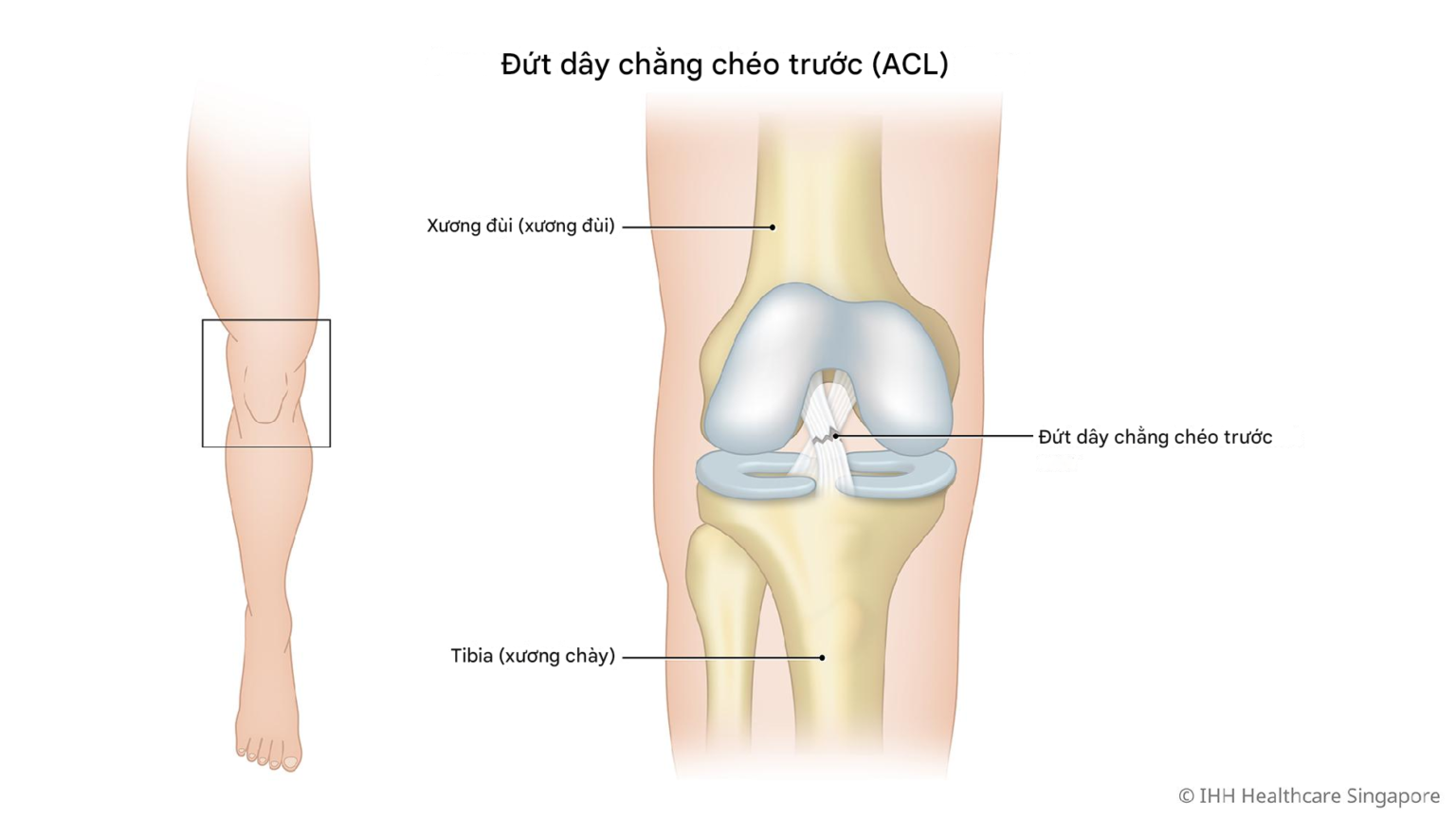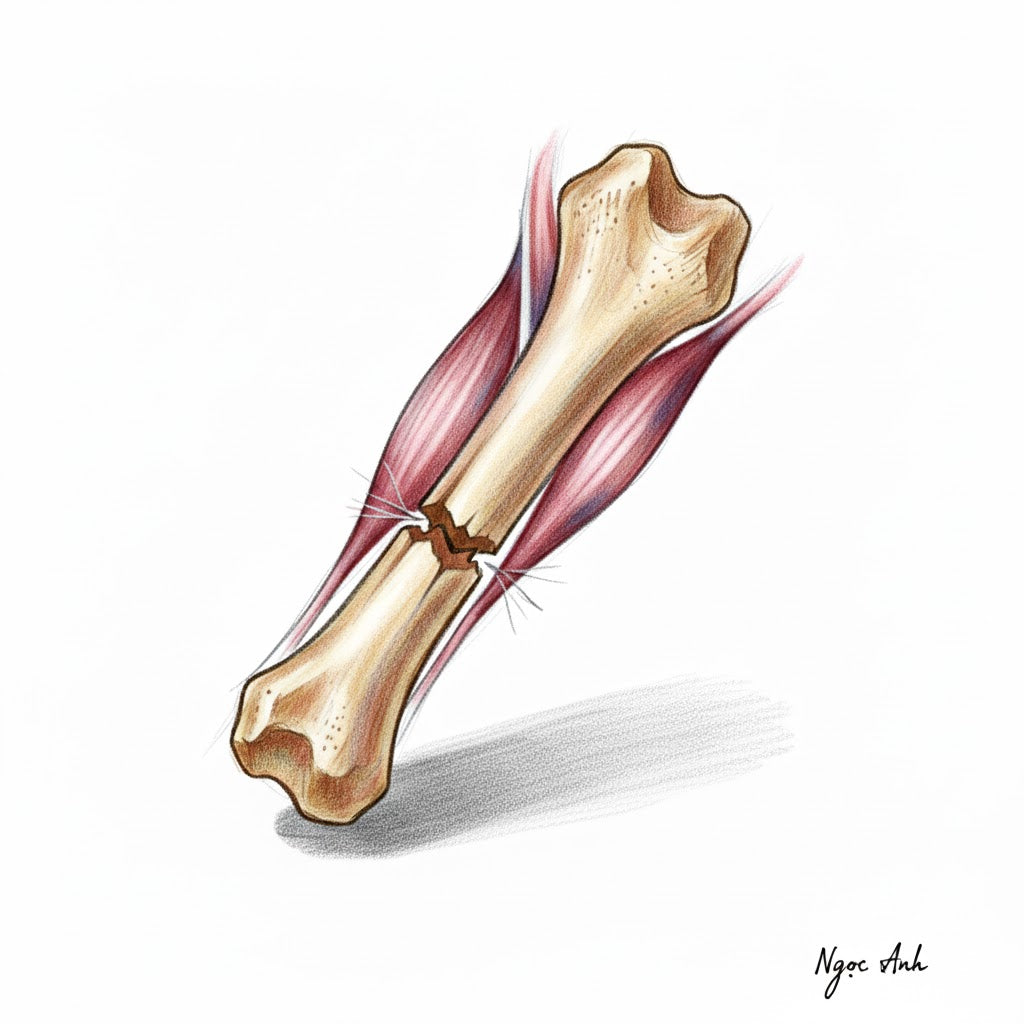Anterior cruciate ligament (ACL) tear

What are the symptoms of an anterior cruciate ligament tear?
Typical symptoms include:
- The crunching sound of a torn knee ligament
- Pain immediately after injury
- Pain when standing or putting pressure on the injured leg
- Difficulty moving the knee or reduced range of motion of the knee
- Feeling unstable, or loose knee joint, knee unable to perform daily activities
- Swelling of the affected knee within 24 hours
- Difficulty walking or limping while walking
What causes anterior cruciate ligament tears in the knee?
Anterior cruciate ligament tears commonly occur during sports and physical activities involving:
- Sudden stop
- Slow down suddenly
- Sudden change of direction
- Turn with the foot planted firmly
- Landing incorrectly when jumping
- Overextension of the knee joint
- Direct hit to the knee or collision

What are the risk factors for anterior cruciate ligament tear?
Your risk of tearing your anterior cruciate ligament is higher if you:
- As a woman.
- Have poor physical condition.
- Playing sports that involve sudden movements – stopping and turning, twisting or turning suddenly, as these movements cause the knee to twist or rotate. Examples of these sports include football, basketball, netball, tennis and gymnastics.
- Using poorly maintained or inappropriate sports equipment.
- Wearing ill-fitting shoes.
What are the complications and associated diseases of anterior cruciate ligament tear of the knee?
If you have a torn anterior cruciate ligament in your knee, you are at significantly higher risk of developing knee arthritis .
This high risk remains even if the tear is surgically repaired. Experts believe that the knee's inflammatory response to the injury itself contributes to arthritis.
About 1 in 2 people who have had an ACL tear will develop arthritis within 10 to 15 years . Because ACL injuries are common in young people and athletes, this may mean that the onset of arthritis may occur early in life.
How to prevent anterior cruciate ligament tears?
You can reduce your risk of tearing your ACL by strengthening your leg muscles and practicing balance.
Strengthening your leg muscles will help protect your knees. Exercises like squats and lunges help build overall strength, and exercises that target your hamstrings can be especially helpful.
When you practice balance, your core strength and balance improve, making you more stable and reducing your chance of knee injury. Practicing balance means:
- Land evenly on both feet
- Bend your knees when landing.
- Body and feet in line when landing
- Keep your knees shoulder-width apart when landing.
How is an anterior cruciate ligament tear diagnosed?
To confirm an anterior cruciate ligament tear, your doctor may perform or recommend the following tests:
- Physical examination . Your doctor will examine your knee and ask you to move it in different directions to observe its function.
- Diagnostic imaging tests . Your doctor may recommend tests such as X-rays, magnetic resonance imaging (MRI), or ultrasound.
- Arthroscopic surgery . Your doctor may recommend arthroscopic surgery in some cases. During arthroscopic surgery, your doctor makes very small incisions and inserts a tiny camera to see the type and extent of the injury and treat it.
How is an anterior cruciate ligament tear of the knee treated?
Depending on the severity of the injury, age, and activity level, the injury may be treated with nonsurgical or surgical methods.
Non-surgical treatment
Nonsurgical treatments for anterior cruciate ligament tears include:
- Rest and avoid activity to reduce pain and swelling in the knee
-
Physical therapy to:
- Restore knee function and range of motion
- Strengthen the surrounding leg muscles
- Increase knee stability
Anterior cruciate ligament reconstruction surgery
You may need surgery if your knee injury is severe. Your doctor may recommend knee arthroscopy, also called ACL reconstruction. This is a minimally invasive procedure to remove the torn ligament and replace it with a piece of tendon from another part of your knee or from a donor.
A torn anterior cruciate ligament (ACL) can significantly impact your activity level and ability in sports. If you suspect you have a torn anterior cruciate ligament (ACL), see a rheumatologist to determine the best treatment for you.
Depending on the severity of the injury, age, and activity level, the injury may be treated with nonsurgical or surgical methods.





